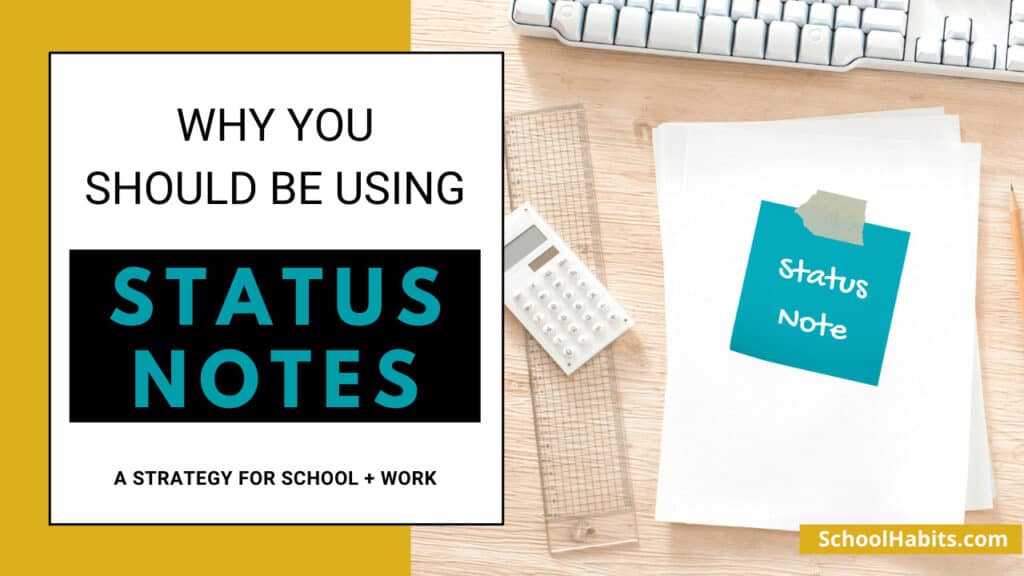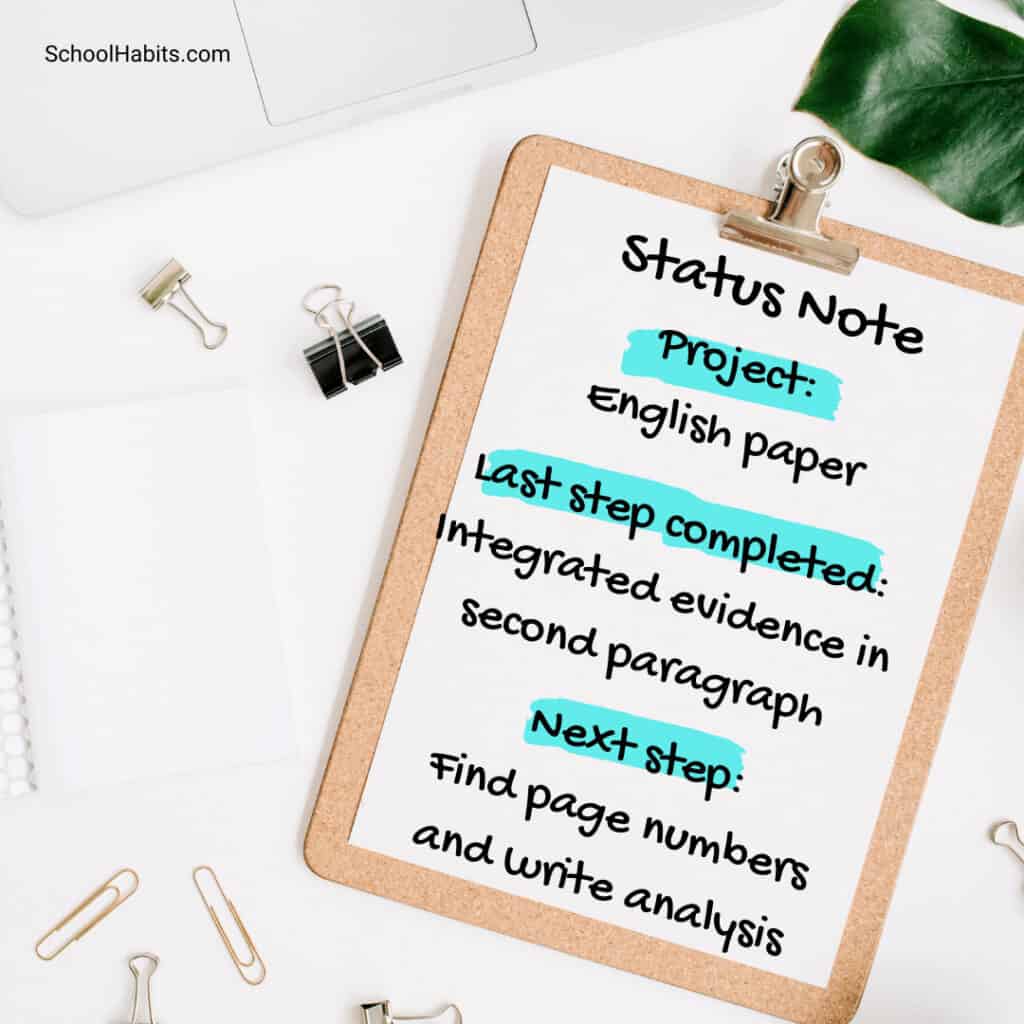By Katie Azevedo, M.Ed.

I have been using Status Notes for years. Of course, back then I had no idea that I would make them into a thing and eventually name them Status Notes, but over time I realized I should share my strategy.
The purpose of this article is to teach you a habit that is helpful for students and working professionals. It reduces forgetfulness and frustration, increases clarity, and saves time. Yeah, it’s that good.
Enter the Status Note.
I rarely get up from my desk without writing a quick Status Note, and I argue that neither should you.
What is a Status Note?
A Status Note, as I’ve named it, is a quick note you write to yourself about the status of the project you are currently working on. You write a Status Note whenever you stop working on something for more than a few minutes. Taking a break to walk the dog? Write a Status Note. Putting away your English essay to move onto math problems? Write a Status Note. Pausing your work project to go to a meeting? Write a Status Note.
If you’re a student, here’s how to incorporate Status Notes into your study breaks.
What do you put on a Status Note?
The level of detail you include on your Status Note will vary, depending on how long you intend to be away from your work. At its most basic level, a Status Note should include the last step you were working on and your next step upon returning. Here are some more tips and guidelines:
If you plan to return to your work later that day:
- The last step you were working on (be very specific)
- The exact step you will take when you return
- Any materials or resources you’ll need (if you had to clean up and shut down browsers)
If you plan to return to your work at least a day later:
- The last step you were working on (be very specific)
- The exact step you will take when you return
- Any materials or resources you’ll need (if you had to clean up and shut down browsers)
- What you’re waiting on (people, responses, time, etc.)
- Uncertainties and questions (roadblocks that you still need to figure out)

Why do I need a Status Note?
Despite your best intentions and your insistence that “there’s no way I’ll forget what step I’m on because obviously I will remember it because … obviously,” our brains are NOT good at this task.
Our working memory has a limited capacity for storing information, and it certainly doesn’t store information for long. Let’s say that during a 10-minute break from our work or studies we check our phones and get a snack. Each of these tasks requires space in our working memory, which means that the details of our work project get booted out to make space for choosing our snack. Therefore, when we return to our desks, we can’t clearly recall what we were working on and what we need to do next. Ugh.
If you take 45 seconds to write a Status Note, you can return to your work or studies knowing exactly what you need to do.
How do I write a Status Note?
Keep it simple. Use a sticky note if you’re planning a short break from your work but won’t be clearing away your materials or shutting down your computer. If you won’t be returning to your project for a day or longer, then you might need more space than a sticky note offers. In these cases, make yourself a Status Note template (I always custom make Status Note templates for my working professional clients) or just use a piece of paper.
This strategy can be a game-changer. Not only is it essential for people with ADHD and working memory deficits, but it’s also insanely helpful for neurotypical people with so-called “good” memories. The key to starting a Status Note habit is to keep it simple and not overthink it. Start small with sticky notes, and whenever you get up from your chair, just jot down what your current step is and what you should do when you return. Your story of “I’ll just remember it” isn’t serving you.

